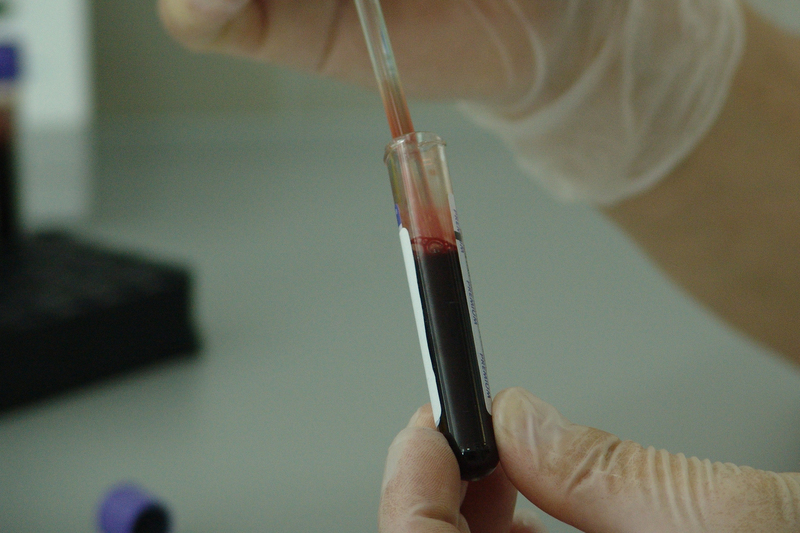Breaking barriers to a cure for HIV
15 October 2019 | Story Lisa Boonzaier. Photo PublicDomainPictures, Pixabay. Read time 7 min.
An international, collaborative study involving University of Cape Town (UCT) researchers has revealed an unexpected finding that could lead to better therapies towards reducing the HIV reservoir, a major barrier to developing a cure for HIV. The reservoir consists of viral DNA that survives hidden in the body even after indefinite treatment with antiretrovirals.
Antiretroviral treatment can suppress HIV, but it cannot cure the infection.
Widely available antiretroviral treatments stop progression of the disease, and in most cases, prevent people from developing the immune deficiency syndrome AIDS. They can reduce a person’s viral load to the point where it’s undetectable with standard tests.
But therapy cannot eradicate the virus, which persists in long-lived reservoirs in the DNA of immune cells. HIV encodes itself in the DNA of millions of CD4 immune cells, just waiting for the opportunity to replicate should antiretroviral treatment ever stop.
“We hope reducing the size of the reservoir will take us a step towards achieving our goal of enabling people to stop treatment without the virus rebounding.”
The dynamics of how this reservoir forms, though, have been largely unknown. Scientists had thought that it formed continuously during infection prior to treatment.
Now scientists have genetic evidence that this is not the case, and that initiation of antiretroviral treatment could be altering the biology of the human immune system in such a way that it allows the HIV reservoir to form or stabilise.
“We hope reducing the size of the reservoir will take us a step towards achieving our goal of enabling people to stop treatment without the virus rebounding,” says UCT’s Professor Carolyn Williamson, the head of the Division of Medical Virology, who led the study with Professor Ron Swanstrom of the University of North Carolina at Chapel Hill (UNC).
The new research results from a collaboration between researchers at UCT, UNC and the Centre for the AIDS Program of Research in South Africa (CAPRISA).
Lying in wait
Since this silent HIV reservoir can persist for many decades, patients are required to stay on treatment for the rest of their lives. Thus, this reservoir is a fundamental obstacle to a cure. But without an understanding of how it forms, there is little chance of ever eradicating it.
Using blood samples collected from nine South African women from the CAPRISA 002 cohort in Durban, the research team embarked on a study to understand the timing the formation of the HIV reservoir.
Genetic clock
HIV is a virus that evolves very rapidly: it’s one of the fastest evolving entities known. Not only does it reproduce quickly – in a person, the virus can produce billions of copies a day – but its genetic copying is sloppy, introducing mutations as it goes.
But this characteristic of HIV also offers a tool for researchers to map a timeline of the virus’s evolution.
“Our unexpected finding that much of the reservoir originates around the time of therapy initiation provides hope that we can restrict reservoir formation in these individuals.”
By comparing the genetic sequence of the virus in the women’s latent reservoir with the sequence of the active viruses circulating in their blood in the years leading up to the start of treatment, the researchers could get an indication of when the reservoir formed.
If the viral sequences from the reservoir were closely related to that of the viruses in the bloodstream around the time treatment started, it would indicate the reservoir had formed then. Whereas if the reservoir sequences were similar to viruses circulating during early infection and before treatment, it would suggest that it was formed continuously throughout infection.
“Surprisingly, we found that the majority of the viruses in the reservoir of these women – about 71% – most closely resembled viruses circulating within a year of therapy starting,” says the lead author of the study, Dr Melissa-Rose Abrahams from the UCT Division of Medical Virology. This is a much higher than you’d see if the reservoir formed continuously before treatment.
This suggests that immune cells infected with the virus at the time treatment begins transition into a silent state and seed the reservoir.
“In Africa, most people initiate therapy during chronic infection,” explains Williamson. “Eliminating the reservoir in these individuals was considered particularly difficult due to the widely held belief that the reservoir formed continuously prior to starting therapy.
“This finding points to an opportunity for intervention.”
“Our unexpected finding that much of the reservoir originates around the time of therapy initiation provides hope that we can restrict reservoir formation in these individuals.”
From suppression to cure
To date, there have been only two cases where people have been cured of HIV, one in Berlin and one in London. These were possible only because of exceptional circumstances not reproducible for the 38 million people infected with HIV worldwide.
“This finding points to an opportunity for intervention,” says Abrahams.
“If we can come up with a biological intervention to reduce the number of infected cells transitioning to latency at the time of initiating treatment, it’s possible we could restrict the establishment of most of this viral reservoir.”
The researchers are now exploring the idea that the initiation of antiretroviral treatment dampens the human immune system by reducing the presence of active HIV. This makes the immune cells where the virus is embedded more likely to turn into long-lived memory cells – that may ultimately constitute much of the long-term viral reservoir.
- Abrahams M et al. (2019) The replication-competent HIV-1 latent reservoir is primarily established near the time of therapy initiation. Science Translational Medicine 11(513): eaaw5589. DOI: 10.1126/scitranslmed.aaw5589
 This work is licensed under a Creative Commons Attribution-NoDerivatives 4.0 International License.
This work is licensed under a Creative Commons Attribution-NoDerivatives 4.0 International License.
Please view the republishing articles page for more information.










